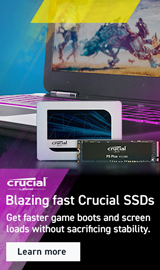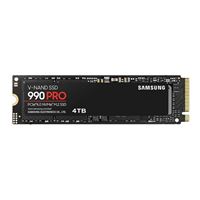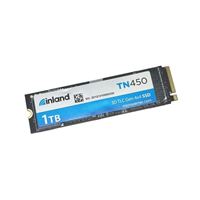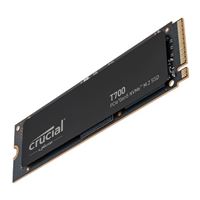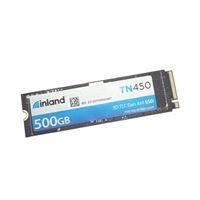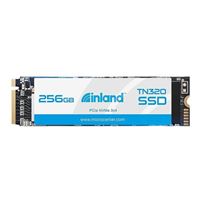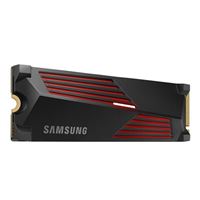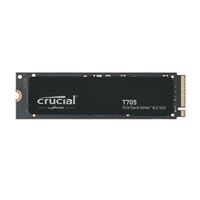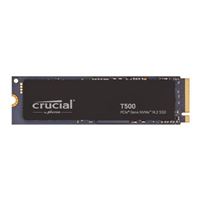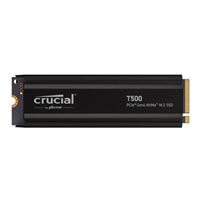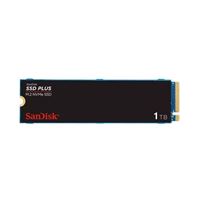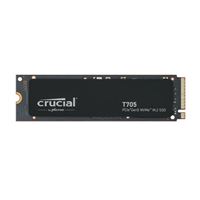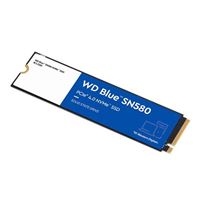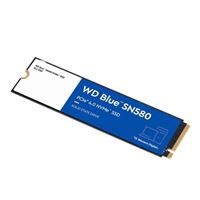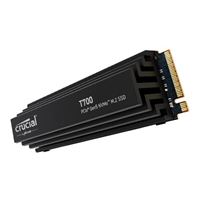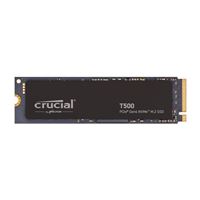Breadcrumbs
- Selected Refinements:
- Hard Drives & Data Storagex
- SSD (Solid State Drives)x
- Internalx
Compare up to 4 items
New list of matching products
X
Sorry, you may compare a maximum of 4 items at a time.
Please clear one or more of your compare items before adding another-
Save an additional $10 when purchased with any CPU, motherboard, or system
SKU: 621888
Usually ships in 5-7 business days.Our price $329.99Original price $499.99Save $170.00 -
Usually ships in 5-7 business days.Our price $129.99
Original price $149.99Save $20.00 -
Usually ships in 5-7 business days.Our price $69.99
Original price $84.99Save $15.00 -
Usually ships in 5-7 business days.Our price $67.99
Original price $79.99Save $12.00 -
Usually ships in 5-7 business days.Our price $439.99
Original price $644.99Save $205.00 -
Usually ships in 5-7 business days.Our price $42.99
Original price $54.99Save $12.00 -
Usually ships in 5-7 business days.Our price $239.99
Original price $299.99Save $60.00 -
SKU: 529750
Usually ships in 5-7 business days.Our price $27.99Original price $29.99Save $2.00 -
Save an additional $10 when purchased with any CPU, motherboard, or system
SKU: 654939
Usually ships in 5-7 business days.Our price $344.99Original price $519.99Save $175.00 -
Usually ships in 5-7 business days.Our price $543.99
Original price $764.99Save $221.00 -
Usually ships in 5-7 business days.Our price $89.99
Original price $169.99Save $80.00 -
Usually ships in 5-7 business days. Limited availability. May not be in stock at time of order. No back orders.Our price $139.99
Original price $219.99Save $80.00 -
Usually ships in 5-7 business days.Our price $269.99
Original price $399.99Save $130.00 -
Usually ships in 5-7 business days.Our price $119.99
Original price $179.99Save $60.00 -
Usually ships in 5-7 business days.Our price $289.99
-
Usually ships in 5-7 business days.Our price $99.99
Original price $184.99Save $85.00 -
Usually ships in 5-7 business days. Limited availability. May not be in stock at time of order. No back orders.Our price $67.99
Original price $104.99Save $37.00 -
Usually ships in 5-7 business days.Our price $299.99
Original price $429.99Save $130.00 -
Usually ships in 5-7 business days.Our price $129.99
Original price $149.99Save $20.00 -
Usually ships in 5-7 business days.Our price $79.99
Original price $89.99Save $10.00 -
Usually ships in 5-7 business days.Our price $439.99
Original price $679.99Save $240.00 -
Usually ships in 5-7 business days.Our price $67.99
Original price $119.99Save $52.00 -
Usually ships in 5-7 business days.Our price $154.99
Original price $269.99Save $115.00 -
Usually ships in 5-7 business days.Our price $49.99
Original price $64.99Save $15.00
Special Offers / Advertisements
{
'name': '990 PRO 4TB Samsung V NAND TLC NAND PCIe Gen 4 x4 NVMe M.2 Internal SSD',
'id': '671225',
'price': '329.99',
'brand': 'Samsung',
'category': 'SSD (Solid State Drives)|512',
'list': 'Search Results',
'position': 1
},{
'name': 'TN470 2TB SSD 3D TLC NAND PCIe Gen 4 x4 NVMe M.2 2280 Internal Solid State Drive',
'id': '675664',
'price': '129.99',
'brand': 'Inland',
'category': 'SSD (Solid State Drives)|512',
'list': 'Search Results',
'position': 2
},{
'name': 'TN470 1TB SSD 3D TLC NAND PCIe Gen 4 x4 NVMe M.2 2280 Internal Solid State Drive',
'id': '675663',
'price': '69.99',
'brand': 'Inland',
'category': 'SSD (Solid State Drives)|512',
'list': 'Search Results',
'position': 3
},{
'name': 'TN450 1TB 3D TLC NAND PCIe Gen 4 x4 NVMe M.2 2280 Internal SSD',
'id': '663877',
'price': '67.99',
'brand': 'Inland',
'category': 'SSD (Solid State Drives)|512',
'list': 'Search Results',
'position': 4
},{
'name': 'T700 4TB TLC NAND Flash PCIe Gen 5 x4 NVMe M.2 Internal SSD',
'id': '666931',
'price': '439.99',
'brand': 'Crucial',
'category': 'SSD (Solid State Drives)|512',
'list': 'Search Results',
'position': 5
},{
'name': 'TN450 500GB 3D TLC NAND PCIe Gen 4 x4 NVMe M.2 2280 Internal SSD',
'id': '663876',
'price': '42.99',
'brand': 'Inland',
'category': 'SSD (Solid State Drives)|512',
'list': 'Search Results',
'position': 6
},{
'name': 'Platinum 4TB SSD 3D QLC NAND SATA III 6Gb/s 2.5" Internal Solid State Drive',
'id': '676240',
'price': '239.99',
'brand': 'Inland',
'category': 'SSD (Solid State Drives)|512',
'list': 'Search Results',
'position': 7
},{
'name': 'TN320 256GB SSD NVMe PCIe Gen 3.0x4 M.2 2280 3D NAND TLC Internal Solid State Drive',
'id': '661858',
'price': '27.99',
'brand': 'Inland',
'category': 'SSD (Solid State Drives)|512',
'list': 'Search Results',
'position': 8
},{
'name': '990 PRO 4TB Samsung V NAND TLC NAND PCIe Gen 4 x4 NVMe M.2 Internal SSD - With Heat Sink',
'id': '675662',
'price': '344.99',
'brand': 'Samsung',
'category': 'SSD (Solid State Drives)|512',
'list': 'Search Results',
'position': 9
},{
'name': 'T705 4TB Micron 232L TLC NAND PCIe Gen 5 x4 NVMe M.2 Internal SSD',
'id': '677290',
'price': '543.99',
'brand': 'Crucial',
'category': 'SSD (Solid State Drives)|512',
'list': 'Search Results',
'position': 10
},{
'name': 'T500 1TB TLC NAND PCIe Gen 4 x4 NVMe M.2 Internal SSD',
'id': '673906',
'price': '89.99',
'brand': 'Crucial',
'category': 'SSD (Solid State Drives)|512',
'list': 'Search Results',
'position': 11
},{
'name': 'T500 2TB TLC NAND PCIe Gen 4 x4 NVMe M.2 Internal SSD',
'id': '673907',
'price': '139.99',
'brand': 'Crucial',
'category': 'SSD (Solid State Drives)|512',
'list': 'Search Results',
'position': 12
},{
'name': 'T700 2TB TLC NAND Flash PCIe Gen 5 x4 NVMe M.2 Internal SSD',
'id': '666930',
'price': '269.99',
'brand': 'Crucial',
'category': 'SSD (Solid State Drives)|512',
'list': 'Search Results',
'position': 13
},{
'name': 'Plus 2TB PCIe Gen 3 x4 NVMe M.2 Internal SSD',
'id': '674543',
'price': '119.99',
'brand': 'SanDisk',
'category': 'SSD (Solid State Drives)|512',
'list': 'Search Results',
'position': 14
},{
'name': 'Black SN770M 2TB 3D TLC NAND Flash PCIe Gen 4 x4 NVMe M.2 2230 Internal SSD',
'id': '676325',
'price': '289.99',
'brand': 'WD',
'category': 'SSD (Solid State Drives)|512',
'list': 'Search Results',
'position': 15
},{
'name': 'T500 1TB TLC NAND PCIe Gen 4 x4 NVMe M.2 Internal SSD w/ Heatsink',
'id': '673908',
'price': '99.99',
'brand': 'Crucial',
'category': 'SSD (Solid State Drives)|512',
'list': 'Search Results',
'position': 16
},{
'name': 'Plus 1TB PCIe Gen 3 x4 NVMe M.2 Internal SSD',
'id': '674542',
'price': '67.99',
'brand': 'SanDisk',
'category': 'SSD (Solid State Drives)|512',
'list': 'Search Results',
'position': 17
},{
'name': 'T705 2TB Micron 232L TLC NAND PCIe Gen 5 x4 NVMe M.2 Internal SSD',
'id': '677289',
'price': '299.99',
'brand': 'Crucial',
'category': 'SSD (Solid State Drives)|512',
'list': 'Search Results',
'position': 18
},{
'name': 'Blue SN580 2TB WDC TLC Nand PCIe Gen 4 x4 NVMe M.2 Internal SSD',
'id': '669730',
'price': '129.99',
'brand': 'Western Digital',
'category': 'SSD (Solid State Drives)|512',
'list': 'Search Results',
'position': 19
},{
'name': 'Blue SN580 1TB WDC TLC Nand PCIe Gen 4 x4 NVMe M.2 Internal SSD',
'id': '669703',
'price': '79.99',
'brand': 'Western Digital',
'category': 'SSD (Solid State Drives)|512',
'list': 'Search Results',
'position': 20
},{
'name': 'T700 4TB TLC NAND Flash PCIe Gen 5 x4 NVMe M.2 Internal SSD w/ Heatsink',
'id': '666934',
'price': '439.99',
'brand': 'Crucial',
'category': 'SSD (Solid State Drives)|512',
'list': 'Search Results',
'position': 21
},{
'name': 'T500 500GB TLC NAND PCIe Gen 4 x4 NVMe M.2 Internal SSD',
'id': '673905',
'price': '67.99',
'brand': 'Crucial',
'category': 'SSD (Solid State Drives)|512',
'list': 'Search Results',
'position': 22
},{
'name': 'T700 1TB TLC NAND Flash PCIe Gen 5 x4 NVMe M.2 Internal SSD w/ Heatsink',
'id': '666932',
'price': '154.99',
'brand': 'Crucial',
'category': 'SSD (Solid State Drives)|512',
'list': 'Search Results',
'position': 23
},{
'name': 'Plus 500GB PCIe Gen 3 x4 NVMe M.2 Internal SSD',
'id': '674541',
'price': '49.99',
'brand': 'SanDisk',
'category': 'SSD (Solid State Drives)|512',
'list': 'Search Results',
'position': 24
}
{'id': 'Tower',
'name': 'Samsung 980 Pro Web Banner',
'creative': 'https://60a99bedadae98078522-a9b6cded92292ef3bace063619038eb1.ssl.cf2.rackcdn.com/images_ads_2021Search_March_Samsung_980_PRO_LCS_search_tower.jpg',
'position': '1' },{'id': 'Tower',
'name': 'Crucial SSD Web Ad',
'creative': 'https://60a99bedadae98078522-a9b6cded92292ef3bace063619038eb1.ssl.cf2.rackcdn.com/images_ads_2022Search_June_crucial_blazing_fast_ssd_search_tower.jpg',
'position': '2' }


